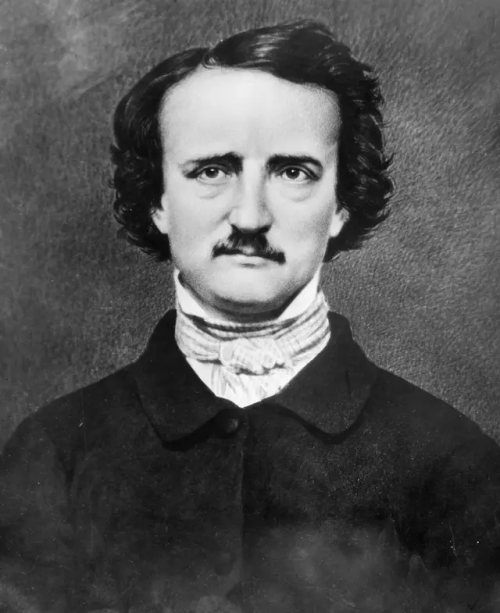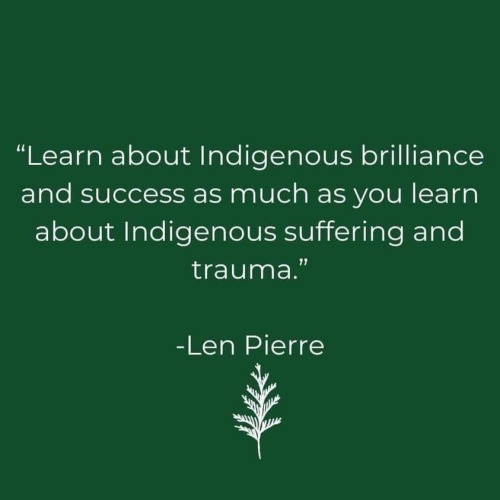
452 posts
Embracing Differences: Lessons We Can Learn From People With Special Needs
Embracing Differences: Lessons We Can Learn from People with Special Needs
Shaina Tranquilino
October 19, 2023

Where individual differences are often stigmatized or overlooked, there is much to be gained by embracing diversity and learning from those who possess unique abilities. Individuals with special needs have an incredible capacity to teach us valuable life lessons that can positively impact our personal growth, relationships, and understanding of humanity as a whole. Their resilience, kindness, authenticity, and ability to find joy in the simplest things are just a few qualities that we can learn from and integrate into our lives.
1. Celebrating Resilience:
People with special needs exhibit remarkable resilience in navigating the challenges they face daily. Despite facing physical or cognitive challenges, they often display an unwavering determination to overcome obstacles. Witnessing their tenacity reminds us of the importance of perseverance and resilience in our own lives. They inspire us to confront difficulties head-on and find strength within ourselves to push forward during tough times.
2. Cultivating Compassion:
Individuals with special needs consistently demonstrate unparalleled levels of empathy and compassion towards others. Their genuine concern for the well-being of those around them serves as a reminder to treat everyone with kindness, dignity, and respect - regardless of their abilities or differences. By observing their profound empathy, we can learn to foster more inclusive communities where acceptance thrives.
3. Embracing Authenticity:
One beautiful lesson we can take away from individuals with special needs is their innate ability to embrace authenticity without judgment or pretense. They do not feel compelled to conform to societal expectations but instead radiate pure genuineness in all aspects of life. Observing this teaches us the value of being true to ourselves and encourages us to live authentically while appreciating the uniqueness in others.
4. Finding Joy in Simplicity:
Often consumed by the fast-paced nature of modern living, we tend to overlook the small moments that bring true joy and fulfillment. People with special needs often possess an extraordinary ability to find happiness in the simplest of things, reminding us that genuine joy can be found in unexpected places. Whether it is a heartfelt smile, a shared laughter, or the appreciation of nature's beauty, their ability to savor life's simple pleasures encourages us to slow down and cultivate gratitude for the little joys that surround us.
Learning from people with special needs offers us a chance to expand our perspectives, challenge preconceived notions about abilities, and foster a more inclusive society. Their resilience, compassion, authenticity, and ability to find joy in simplicity serve as powerful reminders of what truly matters in life. By embracing these lessons into our own lives, we can create compassionate communities where diversity is celebrated and differences are seen as strengths rather than limitations. Let us step forward with open hearts and minds, ready to learn from each other and build a world that embraces the power of uniqueness.
-
 heartsnflowers liked this · 1 year ago
heartsnflowers liked this · 1 year ago
More Posts from Harmonyhealinghub
The Power of Accurate Representation: Advocating for Indigenous People in the Media
Shaina Tranquilino
October 7, 2023

In a world that thrives on media and entertainment, accurate representation is crucial for fostering understanding, breaking stereotypes, and promoting equality. Unfortunately, Indigenous people have historically been misrepresented or underrepresented in the media. However, as society evolves and becomes more inclusive, it is time to turn the spotlight onto their rich cultures, histories, and contemporary issues. In this blog post, we will explore how Indigenous people are currently portrayed in the media and discuss effective strategies to advocate for accurate representation.
1. Understanding the Current Misrepresentation:
Indigenous communities often face harmful stereotypes perpetuated by mainstream media. They are frequently depicted as primitive, exoticized caricatures or reduced to historical figures rather than acknowledging their vibrant existence today. This misrepresentation not only reinforces negative biases but also erases their contributions to society.
2. Amplifying Authentic Voices:
The first step towards accurate representation lies in amplifying authentic Indigenous voices within the media industry. By diversifying decision-making roles and leadership positions in film production companies, newsrooms, and advertising agencies, we can ensure that stories are told from an insider's perspective with cultural sensitivity.
3. Collaborative Storytelling:
Collaboration between Indigenous communities and media professionals is key to portraying accurate narratives. Encouraging partnerships and co-production models allows for shared ownership of stories while respecting cultural protocols and ensuring accuracy.
4. Challenge Stereotypes:
Advocacy begins by challenging stereotypes head-on through public discourse and education initiatives. Engage with social media campaigns calling out harmful portrayals while highlighting positive examples of authentic representation. Grassroots movements like #NotYourMascot challenge appropriation in sports imagery.
5. Support Independent Indigenous Media:
Independent platforms dedicated to showcasing diverse Indigenous voices exist around the world; supporting them financially and sharing their content helps break down barriers imposed by mainstream media gatekeepers.
6. Advocacy Through Education:
Promoting accurate representation requires educating both media professionals and the general public. Encourage media literacy programs that teach critical thinking skills to analyze stereotypes, biases, and the importance of authentic representation.
7. Cultural Competency Training:
Media organizations should prioritize cultural competency training for their employees to foster a deeper understanding of Indigenous cultures, histories, and contemporary issues. This will lead to more informed storytelling and prevent harmful misrepresentations.
The media has an immense influence on society's perception of Indigenous people. By advocating for accurate representation through collaboration, challenging stereotypes, supporting independent platforms, promoting education, and implementing cultural competency training, we can ensure that Indigenous communities are portrayed in a respectful and authentic manner. It is our collective responsibility to advocate for accurate representation in the media to create a world where diverse voices are celebrated and embraced.
Edgar Allan Poe: Unraveling the Mastermind who Revolutionized Horror Shaina Tranquilino October 28, 2023

When it comes to horror literature, there is one name that stands out above all others – Edgar Allan Poe. Born in 1809, this enigmatic American author left an indelible mark on the world of literature with his dark and mysterious tales. With his unparalleled ability to delve into the depths of human psyche, Poe's work has forever transformed the genre of horror, inspiring countless authors and filmmakers over the years.
Poe's Unique Style:
Edgar Allan Poe was a master of creating an eerie atmosphere through vivid descriptions and chilling narratives. His stories were often characterized by themes of death, madness, and the macabre, leaving readers on the edge of their seats. Unlike other writers of his time, Poe refused to shy away from exploring the darker aspects of human nature.
The Birth of Detective Fiction:
Apart from his contributions to horror fiction, Poe is also hailed as the pioneer of detective fiction. In fact, his character C. Auguste Dupin was a precursor to famous detectives like Sherlock Holmes or Hercule Poirot. Stories such as "The Murders in the Rue Morgue" and "The Purloined Letter" showcased Poe's keen analytical mind and introduced readers to deductive reasoning long before it became popular.
Psychological Depth:
One aspect that sets Poe apart from other authors is his exploration of psychological depth. He delves into the darkest corners of human consciousness and exposes our deepest fears and desires. This penetrating analysis resonates with readers even today, making his works timeless classics.
"The Tell-Tale Heart," for example, showcases how guilt can drive a person insane. The narrator's obsession with a single eye reveals not only their own deteriorating mental state but also serves as a metaphor for humanity's hidden sins lurking beneath the surface.
Legacy in Poetry:
While primarily known for his short stories, Poe's impact on poetry is equally significant. His haunting and melancholic verses have become celebrated works in their own right. Poems such as "The Raven," "Annabel Lee," and "The Bells" continue to captivate readers with their lyrical beauty, evocative imagery, and exploration of themes like love, loss, and the inevitability of death.
Influence on Contemporary Horror:
Edgar Allan Poe's influence on contemporary horror cannot be overstated. Countless authors, filmmakers, and artists draw inspiration from his unique style and themes even today. The dark atmospheres, psychological depth, and twists that have since become synonymous with the genre owe a great debt to this literary pioneer.
Poe's Legacy Continues:
Despite facing personal tragedies throughout his life and enduring financial struggles, Edgar Allan Poe left an indelible mark on literature. His work continues to resonate with audiences worldwide, captivating us with its eerie charm and immersive storytelling.
Edgar Allan Poe forever changed the world of horror through his masterful writings. His ability to explore the depths of human fear and obsession has influenced countless authors who followed in his footsteps. From his chilling tales of suspense to his introspective poetry, Poe remains an icon whose legacy will continue to haunt our collective imagination for generations to come.
Understanding the Power of Communication in Human Behaviour
Shaina Tranquilino
October 20, 2023

Communication is an essential aspect of our lives. It helps us express ourselves, connect with others, and understand the world around us. While we often think of communication as verbal or written exchanges, it's crucial to recognize that all behaviour communicates something. From a simple smile to a complex action, every behaviour serves as a medium through which individuals express their thoughts, emotions, needs, and desires. In this blog post, we'll delve into the fascinating concept that all behaviour is communication.
1. Non-Verbal Communication:
Non-verbal cues play a significant role in conveying messages without using words explicitly. Facial expressions, body language, gestures, eye contact – these are all forms of non-verbal communication that can reveal someone's mood, intentions, or emotional state. For instance, crossed arms might indicate defensiveness or disagreement while a warm smile can signify friendliness and openness.
2. Unconscious Communication:
Not all communication is intentional or conscious. At times, people communicate unconsciously through behaviour they may not even be aware of. Psychologists refer to this phenomenon as leakage – when hidden feelings or thoughts inadvertently manifest themselves through actions such as fidgeting or nervous laughter. By paying attention to these subtle cues, we can gain insights into what others may truly be experiencing beneath the surface.
3. Communicating Needs:
Behavioural patterns often reflect unmet needs or desires that individuals struggle to articulate verbally. A child throwing a tantrum at a grocery store might be communicating hunger or fatigue rather than simply misbehaving. Similarly, adults who exhibit passive-aggressive behaviour may be expressing dissatisfaction or frustration indirectly instead of openly discussing their concerns.
4. Social Context and Cultural Influences:
Behaviour also has cultural and contextual dimensions that influence how it is interpreted. Different cultures have distinct norms for acceptable behaviour and varying levels of emotional expressivity. Therefore, understanding someone's behaviour requires considering their cultural background and the environment in which they are interacting.
5. Developmental Stages:
Behavioural communication evolves as we grow and mature. Infants communicate primarily through crying, while toddlers start using words to express themselves. As individuals enter adolescence, verbal and non-verbal expressions become more complex and nuanced. Throughout our lives, our behaviours continue to adapt and change based on various factors such as experiences, relationships, and personal growth.
Recognizing that all behaviour is communication can profoundly impact how we understand ourselves and others. By paying attention to both subtle non-verbal cues and intentional actions, we can develop a deeper empathy for those around us. This understanding allows us to foster better connections, resolve conflicts effectively, and create an environment that encourages open communication. So let's be mindful of the messages we send through our behaviour and strive to decode the behaviour of others with compassion and curiosity.
Healing Your Inner Child: A Journey Towards Emotional Wholeness
Shaina Tranquilino
October 17, 2023

As we navigate through life's challenges and responsibilities, many of us carry unresolved emotional wounds from our past. These unhealed wounds often originate from childhood experiences, shaping our beliefs, behaviours, and relationships as adults. The concept of healing your inner child offers a powerful way to address these deep-rooted issues, paving the path towards emotional wholeness and self-acceptance. In this blog post, we will explore practical steps you can take to embark on this transformative journey.
1. Acknowledge the Existence of Your Inner Child:
The first step in any healing process is acknowledging that there is an inner child within you who requires attention and care. Recognize that your younger self still exists within you, carrying all those emotions and experiences. Allow yourself to reconnect with this part of you without judgment or criticism.
2. Create a Safe Space for Self-Exploration:
Creating a safe space for self-reflection is crucial when delving into your inner child's healing process. Find a peaceful setting where you feel comfortable expressing your emotions freely. Consider journaling, meditation, or seeking professional support to help guide you through this introspective journey.
3. Identify Past Traumas and Limiting Beliefs:
Take time to reflect on your childhood experiences and identify any significant traumas or negative events that might have impacted your psyche. Explore how these incidents may have shaped your beliefs about yourself, others, and the world around you. By gaining awareness of these limiting beliefs, you can begin to challenge them effectively.
4. Practice Self-Compassion:
Healing your inner child requires showing compassion towards yourself in ways that perhaps weren't offered during your formative years. Embrace self-care practices such as nurturing activities, affirmations, forgiveness exercises (including forgiving yourself), and treating yourself with love and kindness whenever possible.
5. Reconnect with Your Inner Child:
Allow yourself to tap into the childlike wonder and innocence that resides within you. Engage in activities that evoke joy, creativity, and playfulness. Embrace hobbies or interests that once brought you happiness as a child. By nurturing this connection, you are providing your inner child with the love and attention they may have lacked.
6. Reparenting Yourself:
Reparenting involves fulfilling your own emotional needs by giving yourself the care and support you longed for during childhood. Be attentive to your feelings and emotions, validating them instead of dismissing or suppressing them. Cultivate healthy boundaries, self-discipline, and self-compassion as part of this healing process.
7. Seek Professional Support if Needed:
Sometimes, healing deep-seated wounds requires professional guidance from therapists specializing in inner child work or trauma recovery. These professionals can offer valuable insights, techniques, and tools tailored to your unique journey towards healing your inner child.
Healing your inner child is an ongoing process that requires patience, compassion, and commitment to self-discovery. By acknowledging their existence, creating a safe space for exploration, identifying past traumas and limiting beliefs, practicing self-compassion, reconnecting with your inner child, reparenting yourself, and seeking professional support when necessary – you can pave the way towards emotional wholeness and lead a more authentic life filled with love and acceptance.
Celebrating Indigenous Brilliance: A Path Towards Reconciliation
Shaina Tranquilino
October 9, 2023

In our continuous journey towards reconciliation, it is essential that we strive to dismantle stereotypes and misconceptions about Indigenous communities. Too often, the narratives surrounding Indigenous peoples focus solely on their suffering and trauma, perpetuating a one-dimensional view of their experiences. However, as Len Pierre rightly asserts, we must also make a conscious effort to learn about and celebrate the brilliance and success within Indigenous cultures. By doing so, we can foster a deeper understanding and appreciation for the resilience and diversity that defines these remarkable communities.
The Importance of Shifting Perspectives:
For far too long, mainstream media has predominantly portrayed Indigenous communities through a lens of victimhood, emphasizing historical injustices and ongoing struggles. While acknowledging past and present challenges is crucial in understanding the systemic issues faced by Indigenous populations, it is equally vital to recognize their achievements and contributions across various fields.
Indigenous Brilliance: A Rich Tapestry of Success:
Indigenous cultures are rooted in ancient wisdom, profound spirituality, and a deep connection with nature. They possess an innate ability to adapt to changing environments while preserving their heritage. The world owes much gratitude to Indigenous peoples for invaluable contributions in areas such as art, music, literature, science, medicine, education, sports, activism, and more.
Artistic Expressions: From traditional crafts like weaving and pottery to contemporary forms like painting and sculpture, Indigenous artists have enriched global artistic traditions with their unique perspectives. Their work serves as a powerful medium for storytelling while preserving cultural identity.
Literary Legacy: From oral traditions passed down through generations to modern literary works exploring personal experiences or societal issues relevant today – Indigenous authors bring forth diverse narratives that enlighten readers worldwide. Their stories shed light on the richness of indigenous cultures' histories while providing valuable insights into contemporary life.
Scientific Innovations: Indigenous knowledge systems boast sustainable practices that have guided societies for centuries. Techniques related to agriculture, land conservation, and medicinal plant usage demonstrate a deep understanding of the natural world. By incorporating this wisdom into modern scientific practices, Indigenous communities contribute to ecological sustainability and inspire innovative approaches.
Sports and Athletics: Indigenous athletes have achieved remarkable success on national and international platforms. Whether it be in hockey, lacrosse, basketball, or other sports – their talent and determination serve as inspirations for future generations while dismantling stereotypes.
Activism and Community Leadership: Indigenous individuals have been at the forefront of social movements advocating for human rights, environmental protection, and cultural preservation. Their contributions continue to shape policies that promote inclusivity, justice, and equity for all.
Len Pierre's quote emphasizes the need to celebrate Indigenous brilliance alongside acknowledging their suffering and trauma. By expanding our knowledge about the achievements and successes within Indigenous cultures, we can break free from limited narratives. It is through this understanding that we pave the way towards reconciliation based on mutual respect, appreciation, and a genuine desire to learn from one another. Let us collectively embark on a journey that recognizes the resilience, brilliance, and strength inherent in Indigenous communities worldwide.